University of Surrey
 | |
| Type | Public research university |
|---|---|
| Established |
1966 – gained University Status by Royal Charter 1891 – Battersea Polytechnic Institute |
| Endowment | £2.6 million (as of 31 July 2017)[1] |
| Budget | £267.3 million (2016-17)[1] |
| Chancellor | The Duke of Kent[2] |
| Vice-Chancellor | G.Q. Max Lu[3] |
Administrative staff |
2,338 incl. 1,403 academics and 150 researchers[4] |
| Students | 16,065 (2016/17)[5] |
| Undergraduates | 12,330 (2016/17)[5] |
| Postgraduates | 3,735 (2016/17)[5] |
| Location | Guildford, England, UK |
| Campus | Suburban |
| Colours | Blue and gold |
| Affiliations |
Association of MBAs ACU EUA SETsquared UGPN Universities UK |
| Website | www.surrey.ac.uk |
 | |
The University of Surrey is a public research university located in Guildford, Surrey, United Kingdom. The university specialises in science, engineering, medicine and business. It received its charter on 9 September 1966, and was previously situated near Battersea Park in south-west London. The institution was known as Battersea College of Technology before gaining university status. Its roots, however, go back to the Battersea Polytechnic Institute, founded in 1891 to provide further and higher education for London's poorer inhabitants.[6] More recently, the university launched the Surrey International Institute with Dongbei University of Finance and Economics.[7]
The university's main campus is located on Stag Hill close to the centre of Guildford and adjacent to Guildford Cathedral. A second campus, at Manor Park, is located a short distance away and has been developed to expand upon existing accommodation, academic buildings and sporting facilities. The annual income of the institution for 2016–17 was £267.3 million of which £40.3 million was from research grants and contracts, with an expenditure of £260.9 million.[1]
The university is a major centre for satellite and mobile communications research. In March 2014, the British Prime Minister David Cameron announced a partnership between the University of Surrey, King's College London and the University of Dresden for the development of 5G technology.[8] The university is a member of the Association of MBAs, the European University Association and Association of Commonwealth Universities.
The university has 10 Fellows of the Royal Society, 21 Fellows of the Royal Academy of Engineering, one Fellow of the British Academy and 6 Fellows of the Academy of Social Sciences.[9]
History
Battersea Polytechnic Institute
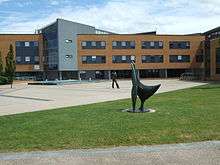
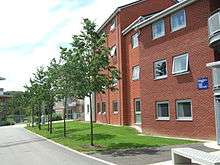
The University of Surrey was preceded by the Battersea Polytechnic Institute which was founded in 1891 and admitted its first students in 1894. Its aims were to provide greater access to further and higher education for some of the "poorer inhabitants" of London.
In 1901, evening classes consisted of some of the following; Mechanical Engineering and Building, Electrical Engineering, Chemical and other Trades, Physics and Natural Science, Maths, Languages, and Commercial subjects, Music. Special classes for Women in Domestic Economy subjects. Day Classes in Art, Science, Women's subjects and Gymnastics. Classes in preparation for University and Professional Examinations. Also. Science day School for Boys and Girls, Commercial School for Girls, Training School for Domestic Economy and Training for Teachers.
The Institute focused on science and technology subjects, and from about 1920 taught some classes for University of London students.[10] The Institute awarded University of London external degrees.[11]
Battersea College of Technology
In 1956, the Institute was among the first to receive the designation "College of Advanced Technology" and was renamed Battersea College of Technology. By the beginning of the sixties, the College had virtually outgrown its building in Battersea and had decided to move to Guildford. In addition to this, the Robbins Report of 1963 proposed that the Colleges of Advanced Technology, including Battersea, should expand and become degree-awarding universities.[10]
In 1965, the university-designate acquired a greenfield site in Guildford from Guildford Cathedral, Guildford Borough Council and the Onslow Village Trust.
University
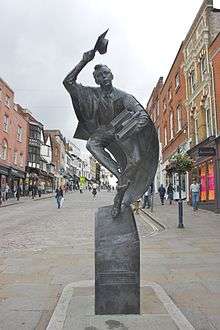
On 9 September 1966 the University of Surrey was established by Royal Charter and by 1970 the move from Battersea to Guildford was complete.[10] On the day before the installation ceremony of the first Chancellor of the University of Surrey, the Aberfan disaster occurred. Alfred Robens, Baron Robens of Woldingham who was appointed the first Chancellor, was also the chairman of the National Coal Board, and as such was expected to visit the site of the disaster. Robens decided instead to continue with the ceremony in Guildford to become Chancellor.[12][13]
Early visitors to the new campus were Led Zeppelin, who performed their very first gig at the university on 25 October 1968.[14]
Between 1982 and 2008, the university became the trustee of the building of the Guildford Institute, using parts of the building for its adult education programme and providing a university presence in the heart of Guildford. The Assessment and Qualifications Alliance (formerly Associated Examining Board) moved from Aldershot to its own headquarters building on the Stag Hill campus in 1985.
The university marked its Silver Jubilee in 1991, an event celebrated by the publishing of Surrey – The Rise of a Modern University by Roy Douglas[6] and by a Service of Thanksgiving in Guildford Cathedral attended by HM The Queen in March 1992.
The university celebrated its 35th anniversary in May 2002 with a major event in Guildford Cathedral. It was also marked by the unveiling of the Surrey Scholar sculpture (by Allan Sly FBS) to mark the Golden Jubilee of Her Majesty The Queen and as a gift to the people of Guildford. The Surrey Scholar is located at the bottom of Guildford High Street. Understanding the Real World, a visual history of the university, by Christopher Pick, was published to coincide with this anniversary.[10]
In 2007, the university saw a major increase in overall applications by 39% compared with the previous year.[15] This was followed by a further increase in applications of 12% in 2008.[16]
In October 2008, the university lost out to Royal Holloway in a bid to merge with London medical institute St George's, University of London.[17]
From September 2009, the Guildford School of Acting became a subsidiary of the university and relocated from Guildford town centre to the university campus.
Campus
%2C_University_of_Surrey.jpg)
The university moved in 1968 to a new 30 ha (74-acre) site on Stag Hill in Guildford, adjacent to Guildford Cathedral. A further 90 ha (222 acres) allocated to the university remained undeveloped until 2005. The new Manor Park campus, designed as a car-free village, is 1.6 kilometres (1 mi) from the Stag Hill campus and on the other side of the A3 trunk road.[18] It combines residences for students and staff, buildings for research and teaching, and sporting facilities.
The BBC's local radio station for Surrey and North-East Hampshire, BBC Surrey, has its studios on the campus.[19] In addition the university has a student-run medium wave radio station, Stag Radio.
In November 2007, the university was given planning permission to build the Surrey Multifaith Centre. This will be the first building in Britain to have a Synagogue, Muslim Prayer Hall, Gurdwara and Chapel built separately under one roof.[20]
On 8 July 2009, a temporary Amigo convenience store opened in the BB Building on the campus, replacing the previous One Stop store which was situated near the library. The new store is operated by the Compass Group, and will see the University enjoy 'guaranteed rental income and share of turnover'.[21] The project is part of wider work which saw a new building, housing a larger shop and library extension, which opened on the One Stop site in April 2011.[22]
In September 2009, the Guildford School of Acting moved into a new purpose built facility on the main Stag Hill campus as part of a strategic merger between the two organisations. The old Sports Centre has been converted into the Ivy Arts Centre, a performing arts facility housing a 200-seat theatre and studio and workshop space.
A £35 million research centre for the development of the first worldwide 5G network was scheduled to open in February 2015.[23]
Surrey Sports Park
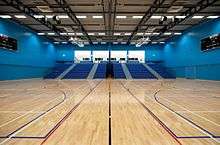
In April 2010, a £35 million new sports centre named the Surrey Sports Park opened.[24]
The Surrey Sports Park is situated close to the main university campus on its Manor Park site. It houses a 50-metre Olympic-size swimming pool, three multi-sports halls, a squash centre, 700 square metres of fitness facilities, two artificial floodlit pitches, outdoor and indoor tennis courts, four real tennis courts and a climbing centre.[25]
The 1,000 seat indoor arena is home to Surrey Scorchers basketball team, who have been using the venue since 2010 following a move from their previous home at the Guildford Spectrum. Heat are one of the leading teams and former winners of the British Basketball League, the country's top division.
It played host to all but 4 matches of the 2010 Women's Rugby World Cup (the semi finals, 3rd place play off and final were held at the Twickenham Stoop). It is also the official training facility for Harlequins rugby club, with plans to add a private gym for the club in addition to the already available facilities.
It will also be the home ground of UniS Old Boys F.C., a football team for alumni of the university, which competes in the Surrey County Intermediate League (Western), at the 12th level of the English football league system.[26]
Surrey University participates in an annual sports festival called the Varsity Games. The university competes against other institutions such as Royal Holloway, University of London and Kingston University. Over the years, there has been stiff competition between Surrey and Kingston for the Varsity Cup, that has made both universities arch-rivals at the Games.[27]
Organisation and governance
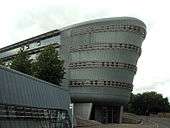
The academic activities of the university are divided into the following three faculties:
- Faculty of Arts & Social Sciences
- School of Arts
- School of Economics
- School of English and Languages
- School of Hospitality and Tourism Management
- School of Law
- Department of Politics
- Department of Sociology
- Surrey Business School
- Faculty of Engineering and Physical Sciences
- Department of Chemistry
- Department of Chemical and Process Engineering
- Department of Civil and Environmental Engineering
- Department of Computer Science
- Department of Electrical and Electronic Engineering
- Department of Mathematics
- Department of Mechanical Engineering Sciences
- Department of Physics
- Centre for Environmental Strategy
- Faculty of Health and Medical Sciences
- School of Biosciences and Medicine
- School of Health Sciences
- School of Psychology
- School of Veterinary Medicine
Governance
Prince Edward, Duke of Kent was installed as Chancellor, a ceremonial non-residential post, in 1977. The university is led at the executive level by the President and Vice-Chancellor, as of 2017 Max Lu. The key bodies in the university governance structure are the Council, Senate and Executive Board.[28] The Council is the governing body of the university, responsible for the overall planning and management of the university and to ensure processes are in place to monitor financial and operational controls, and the University's performance against its strategy. The council is composed of no fewer than eleven external members, up to seven ex-officio members and up to three members elected by Senate.[29]
The Senate is the statutory body responsible for governing the University's academic matters, including teaching and research, and the regulation and direction of the education and conduct of students. The composition of the Senate is drawn from the academic staff of the University, together with a number of ex-officio, elected and co-opted members. The Chair of the Senate is the President and Vice-Chancellor of the University.[30]
The Executive Board is the senior advisory body which assists the President and Vice-Chancellor in discharging his executive authority to manage the operations and affairs of the University. It is responsible for advising on all matters relating to the University's strategy and for making recommendations to Council for approval.[31]
The above Bodies are supported by a series of Committees which oversee the activities of distinctive administrative and academic areas of the University.[30]
Vice-Chancellor
On 3 December 2015 it was announced that G.Q. Max Lu would become the University's fifth President and Vice-Chancellor, taking up his appointment in April 2016.[32]
He succeeded Sir Christopher Snowden who moved to take up the Vice-Chancellorship at the University of Southampton in September 2015.[33] Sir Christopher joined Surrey on 1 July 2005. His predecessors are Patrick J. Dowling (1994-2005), Anthony Kelly (1975-1994)[34] and Peter Leggett, the last Principal of Battersea College of Technology[35] and the university's first Vice-Chancellor.[36]
Academic profile
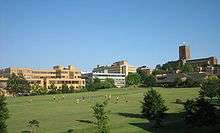
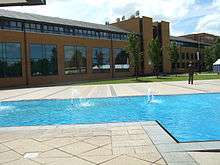
Research
The university conducts extensive research on small satellites, with its Surrey Space Centre and spin-off commercial company, Surrey Satellite Technology Ltd. In the 2001 Research Assessment Exercise, the University of Surrey received a 5* rating in the categories of "Sociology", "Other Studies and Professions Allied to Medicine", and "Electrical and Electronic Engineering" and a 5 rating in the categories of "Psychology", "Physics", "Applied Mathematics", "Statistics and Operational Research", "European Studies", and "Russian, Slavonic and East European Languages".[37]
The new 5G Innovation Centre (5GIC) at the University of Surrey has gained over £40m support from international telecommunications companies including Aeroflex, MYCOM OSI, BBC, BT Group, EE (telecommunications company), Fujitsu Laboratories of Europe, Huawei, Ofcom, Rohde & Schwarz, Samsung, Telefonica and Vodafone – and a further £11.6m from the Higher Education Funding Council for England (HEFCE).
In addition, the Surrey Research Park is a 28 ha (69-acre) low density development which is owned and developed by the university, providing large landscaped areas with water features and facilities for over 110 companies engaged in a broad spectrum of research, development and design activities. The university generates the third highest endowment income out of all UK universities "reflecting its commercially-orientated heritage."[38]
Awards
In 1991 the university was granted the Queen's Award for Export Achievement,[10] and in 1996 it was awarded the Queen's Anniversary Prize for Higher & Further Education in recognition of the university's outstanding achievement in satellite engineering and communications, teaching and research by the Centre for Satellite Engineering Research and its associated companies.[39] In 1998 Surrey Satellite Technology Ltd (SSTL) was awarded the Queen's Award for Technological Achievement. This was presented in person by the Queen on her second visit to the university, accompanied by The Duke of Edinburgh and The Duke of Kent, Chancellor of the University.[40]
More recently the university was awarded the 2002 Queen's Anniversary Prize for Higher & Further Education, this time for its research and development on optoelectronic devices and ion beam applications.[39] The university has a high number of staff who are academicians of the learned societies: 10 Fellows of the Royal Society, 21 Fellows of the Royal Academy of Engineering, one Fellow of the British Academy and 6 Fellows of the Academy of Social Sciences.[9]
In July 2007, the university was awarded Fairtrade University status by the Fairtrade Foundation.[41]
In 2011, the university won the 2011 Queen's Anniversary Prize for Higher & Further Education, for its research into the fields of safe water and sanitation.[42]
In 2013, the Electronic Engineering Department of the university won the 2013 Elektra Award University Department of the Year,[43] and judged to be the most innovative and successful in Europe.[44]
Admissions
| 2017 | 2016 | 2015 | 2014 | 2013 | |
|---|---|---|---|---|---|
| Applications[45] | 32,105 | 34,565 | 28,315 | 29,680 | 22,120 |
| Offer Rate (%)[46] | 71.5 | 68.1 | 64.1 | 71.7 | 71.9 |
| Enrols[47] | 4,300 | 4,055 | 3,390 | 3,260 | 2,800 |
| Yield (%) | 18.7 | 17.2 | 18.7 | 15.3 | 17.6 |
| Applicant/Enrolled Ratio | 7.47 | 8.63 | 8.35 | 9.10 | 7.90 |
| Average Entry Tariff[48][lower-alpha 1] | n/a | 166 | 438 | 431 | 424 |
New students entering the university in 2015 had the 14th highest UCAS Points in the UK at 438 points (the equivalent of AAB at A Level and BB at AS Level).[49] According to the 2017 Times and Sunday Times Good University Guide, approximately 8% of Surrey's undergraduates come from independent schools.[50]
For the 2016-17 academic year, the university has a higher proportion of female than male students with a male to female ratio of 45:55 in the population. The undergraduate student body is composed of 73% from the UK, 11% from the EU and 16% from outside of the EU.[51] More students graduate from Surrey with a First Class Honours degree (44.4%) than with a 2:1 degree (40.9%), placing it second amongst mainstream British universities by the proportion of First Class degrees awarded.[52]
Reputation and rankings
Global rankings | ||
| ARWU[53] (2018) | 301–400 | |
|---|---|---|
| CWTS Leiden[54] (2018) | 226 | |
| QS[55] (2019) | 248 | |
| THE[56] (2019) | 251-300 | |
| Complete[48] (2019) |
19 | |
| The Guardian[57] (2019) |
21 | |
| Times / Sunday Times[58] (2019) |
23 | |
British Government assessment | ||
| Teaching Excellence Framework[59] | Gold | |
In The Sunday Times 10-year (1998–2007) average ranking of British universities based on consistent league table performance, Surrey was ranked 35th overall in the UK.[60] For 2018/19, it places between 19th and 21st in the three main ranking compilations of universities in the United Kingdom. According to the figures revealed by the Higher Education Statistics Agency 2013/14, the University of Surrey has the fourth highest percentage of graduates entering employment and/or further study within six months of graduation at 96.9% (behind Lancaster University, Robert Gordon University and Arts University Bournemouth).[61]
Subjects ranked in the top 10 include Hospitality & Tourism, Business & Management, Electronic Engineering, Food Science, Sociology, Aerospace Engineering, Mechanical Engineering, Animal Science, English Literature, Creative Writing, Modern Languages and Psychology.[62]
Educational links
Since its foundation, the university has fostered links with other educational bodies in the local community and region. For example, in recent years it has validated courses at and subsequently accredited Saint Mary's College (now an independent institution called St Mary's University College, Twickenham),[63] Wimbledon School of Art,[64] and Farnborough College of Technology.[65] The university currently validates courses at North East Surrey College of Technology (NESCOT), Guildford School of Acting, Guildford College of Further & Higher Education, King Edward VII Hospital Department of Staff Development, The Nuclear Department at HMS Sultan, St John's Seminary, Southern Theological Education & Training Scheme (STETS), the Pre-Retirement Association and SHL (UK) Ltd.[66]
In 1998, as a result of the continuing development in the relationship between the university and the nearby Roehampton Institute, it was decided to form an academic federation. In November 1999, the Privy Council approved the necessary changes to the university's Charter and Statutes and the Roehampton Institute became The University of Surrey Roehampton at the beginning of 2000. Between 2000 and 2004, the university and Roehampton worked together as the Federal University of Surrey.[67] In June 2004, the Privy Council granted Roehampton an independent university title, and it became Roehampton University from 1 August 2004. This move ended the federal partnership between the two institutions, although collaboration between the two is being maintained.[68]
In 2007, the university and Dongbei University of Finance and Economics in Dalian, China, launched the Surrey International Institute, DUFE.[69] The SII at DUFE offers Surrey degrees and dual-degree programmes in China.[7] A placement year link with North Carolina State University is currently being initiated in 2009, where each institution places students from the other with companies located nearby, in the South East of England and the Carolinas, respectively.[70]
International partners
The university holds a number of formal links with institutions from around the world to share teaching and research and facilitate staff and student exchanges.[71]










Notable academics and alumni
Notable alumni
- Theoretical physicist Jim Al-Khalili (BSc; PhD)
 President of Mauritius Ameenah Gurib (BSc)
President of Mauritius Ameenah Gurib (BSc)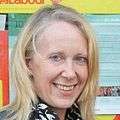 Labour Member of Parliament Liz McInnes (MSc)
Labour Member of Parliament Liz McInnes (MSc) Conservative peer Jim O'Neill, Baron O'Neill of Gatley (PhD, 1982)
Conservative peer Jim O'Neill, Baron O'Neill of Gatley (PhD, 1982)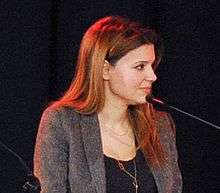 Psychologist Linda Papadopoulos (MSc)
Psychologist Linda Papadopoulos (MSc) Wolf Prize in Agriculture laureate John Pickett (BSc, 1967; PhD, 1971)
Wolf Prize in Agriculture laureate John Pickett (BSc, 1967; PhD, 1971)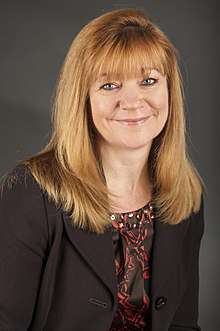 Conservative Member of the European Parliament Kay Swinburne (MBA)
Conservative Member of the European Parliament Kay Swinburne (MBA).jpg) Governor of the Central Bank of Barbados Marion Vernese Williams (PhD)
Governor of the Central Bank of Barbados Marion Vernese Williams (PhD)- Indonesian Cabinet Minister Arief Yahya
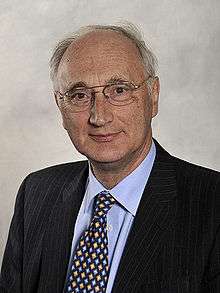 Conservative peer George Young, Baron Young of Cookham (MPhil)
Conservative peer George Young, Baron Young of Cookham (MPhil)
Notable academics
Academics to work at the university include Alf Adams, pioneer of the strained quantum-well laser;[73] Jim Al-Khalili, the nuclear physicist, author and broadcaster;[74] Aleks Krotoski, the technology journalist and broadcaster;[75] Sir Martin Sweeting, founder of Surrey Satellite Technology Ltd;[73] and Nigel Gilbert, the sociologist pioneer in the use of agent-based models in the social sciences.[76]
In 1971, Daphne Jackson became the first female UK Professor of Physics.
On 20 May 2009, Andreas Mogensen, a researcher at the Surrey Space Centre, was announced as a new member of the European Astronaut Corps, part of the European Space Agency and in doing so, will become the first Danish astronaut.[77]
In February 2011, terrorism and Northern Ireland expert Marie Breen Smyth, joined the Politics department, as Chair in International Relations.[78] In March 2005, Breen-Smyth, (then Smyth) gave evidence to the House of Commons Northern Ireland Affairs Committee Inquiry into Dealing with Northern Ireland's past.[79] Another notable academic was the late translation studies scholar Peter Newmark.[80]
One notable academic, who is known for his work in Nanotechnology, is Ravi Silva. Ravi Silva is the current Director of the Advanced Technology Institute at the university. In 2003, he was awarded the Albert Einstein Silver Medal and the Javed Husain Prize by UNESCO for contributions to electronic devices. The 2011 Clifford Paterson Lecture was given by Silva for his outstanding contributions to basic science and engineering in the field of carbon nanoscience and nanotechnology. The lecture is given annually on any aspect of engineering.[81] The General Electric Company Limited endowed the lecture in 1975 in honour of Clifford Paterson who undertook the creation of the GEC Research Laboratories in 1919.[82] Other notable academics who have delivered the lecture include Frank Kelly and Richard Friend, both from the University of Cambridge.
Surrey's Centre for Environmental Strategy (established by Roland Clift in 1992) gained a lot of attention with the publication of Prosperity Without Growth by University of Surrey academic Tim Jackson, Professor of Sustainable Development and Director of the ESRC Research Group on Lifestyles, Values and Environment.[83]
Student life
Students' Union
The University of Surrey Students' Union is the sole representative body of Surrey students. They represent students on academic and welfare issues, as well as administering sports clubs and societies. The Union was incorporated as a non-profit charity in July 2011, so any takings from the Union's four commercial outlets are invested in supporting the membership side of the business. Four zones exist within the organisation representing Support, Voice, Community and Activity, with a sabbatical officer managing each one, as well as a president who is a member of the University council. The Students' Union also organise events on a weekly basis which are held at their venues including Rubix and The Basement for students to take part in.
Media
StagTV is the television station run by students at the University of Surrey. It is primarily run from offices on the main Stag Hill campus and it also creates content for the Students' Union, through which it is a constitued group, but has editorial independence. Other student media on campus include Stag Radio and The Stag.[84]
The Stag is a monthly student magazine. Originally established as a newspaper under the name Bare Facts in 1967. The newspaper was re-branded as The Stag in 2008.
See also

References
- ↑ New UCAS Tariff system from 2016
- 1 2 3 "Financial Statements for the Year to 31 July 2017" (PDF). University of Surrey. p. 21. Retrieved 11 January 2018.
- ↑ "University of Surrey Calendar". University of Surrey. Archived from the original on 31 July 2008. Retrieved 12 June 2008.
- ↑ http://www.surrey.ac.uk/mediacentre/press/2016/new-vice-chancellor-joins-surrey. Missing or empty
|title=(help) - ↑ "Annual Review 2006/07" (PDF). University of Surrey. Archived from the original (PDF) on 7 February 2009. Retrieved 17 August 2008.
- 1 2 3 "2016/17 Students by HE provider, level, mode and domicile" (CSV). Higher Education Statistics Agency. Retrieved 25 March 2018.
- 1 2 Douglas, Roy (1991). Surrey: the Rise of a Modern University. Guildford: Surrey University Press Ltd. ISBN 1-85237-067-X.
- 1 2 Hodges, Lucy (26 June 2008). "Surrey University's new China institute will help to put it on the international map". The Independent. London. Retrieved 8 August 2008.
- ↑ "Partnership Announcement". PC Pro. Retrieved 24 August 2014.
- 1 2 "University of Surrey fellows". University of Surrey. Retrieved 8 August 2008.
- 1 2 3 4 5 Pick, Christopher (2002). Understanding the Real World. University of Surrey Press. ISBN 1-85237-246-X.
- ↑ "University of London graduates list". University of London. Archived from the original on 14 September 2010. Retrieved 4 April 2013.
- ↑ "Private Eye". www.private-eye.co.uk. Retrieved 2017-03-10.
- ↑ Goodman, Geoffrey (1999-06-28). "Lord Robens of Woldingham". The Guardian. ISSN 0261-3077. Retrieved 2017-03-10.
- ↑ "Led Zeppelin Official Timeline". LedZeppelin.com. Retrieved 1 March 2016.
- ↑ "BBC News: Are top-up fees changing courses?". BBC News. 14 February 2007. Retrieved 16 April 2007.
- ↑ "University of Surrey sees highest growth in applications". University of Surrey. Retrieved 7 August 2008.
- ↑ "College could merge with a London university". The Surrey Herald. 13 October 2008.
- ↑ "University of Surrey Accommodation Services: Band D Rooms". University of Surrey. Retrieved 7 August 2008.
- ↑ "BBC Sussex & BBC Surrey website". BBC. Retrieved 16 April 2007.
- ↑ "Multi-faith centre gets the go-ahead". Get Surrey/Surrey Advertiser. Retrieved 7 August 2008.
- ↑ "Compass opens its first post office at University of Surrey". Compass Group UK & Ireland – News. Archived from the original on 12 May 2013. Retrieved 9 October 2009.
- ↑ "Amigo supermarket is a new friend on campus". University of Surrey (Registration required). Retrieved 9 October 2009.
- ↑ "SURREY'S £35M 5G VISION TAKES SHAPE".
- ↑ "Under starter's orders, University of Surrey press release". University of Surrey. Retrieved 6 August 2008.
- ↑ Hodges, Lucy (12 June 2008). "Which is the best university for sport?". The Independent. London. Retrieved 13 June 2008.
- ↑ "About the University of Surrey Old Boys Football Club". University of Surrey Old Boys Football Club. Archived from the original on 20 November 2008. Retrieved 5 March 2010.
- ↑ "Kingston exposed by Surrey in varsity drubbing". River Online. 4 April 2011. Archived from the original on 7 January 2012. Retrieved 19 April 2012.
- ↑ "Governance - University of Surrey". www.surrey.ac.uk.
- ↑ "Members of Council - University of Surrey". www.surrey.ac.uk.
- 1 2 "Statutory bodies and committees - University of Surrey". www.surrey.ac.uk.
- ↑ "Executive Board - University of Surrey". www.surrey.ac.uk.
- ↑ Times Higher Education
- ↑ Daily Echo
- ↑ https://www.surrey.ac.uk/features/death-former-surrey-vc-professor-anthony-kelly
- ↑ "University of Surrey website".
- ↑ University of Surrey website
- ↑ "HERO – Higher Education & Research Opportunities in the UK: RAE 2001 : Submissions". Higher Education and Research Opportunities in the UK. Archived from the original on 22 March 2009. Retrieved 1 June 2007.
- ↑ "RED Scientific". RED Scientific Limited. Archived from the original on 29 September 2007. Retrieved 7 August 2008.
- 1 2 "The Queen's Prizes for Higher & Further Education – Engineering & Technology winners". The Royal Anniversary Trust. Archived from the original on 5 April 2008. Retrieved 8 August 2008.
- ↑ "SSTL celebrates 15 years in business". Spaceref.com. Retrieved 8 August 2008.
- ↑ "Fairtrade Universities". People & Planet. Archived from the original on 20 August 2008. Retrieved 8 August 2008.
- ↑ "University of Surrey Queens Anniversary Prize". University of Surrey. Retrieved 27 January 2012.
- ↑ "Congratulations to the 2013 Winners!". Elektra Awards. Retrieved 23 July 2014.
- ↑ "Electronic Engineering Department wins Elektra Awards 2013". University of Surrey. 29 November 2013. Archived from the original on 28 December 2014.
- ↑ "End of Cycle 2017 Data Resources DR4_001_03 Applications by provider". UCAS. UCAS. 2017. Retrieved 25 January 2018.
- ↑ "Sex, area background and ethnic group: S85 University of Surrey". UCAS. UCAS. 2016. Retrieved 10 February 2017.
- ↑ "End of Cycle 2017 Data Resources DR4_001_02 Main scheme acceptances by provider". UCAS. UCAS. 2017. Retrieved 25 January 2018.
- 1 2 "University League Table 2019". The Complete University Guide. Retrieved 26 April 2018.
- ↑ "University League Table 2018". Complete University Guide. Retrieved 26 April 2017.
- ↑ "The Times and Sunday Times Good University Guide 2017". The Good University Guide. London. Retrieved 16 August 2016. (subscription required)
- ↑ "R40 Student Key Facts: University of Surrey 2016-17 Academic Year" (PDF). University of Surrey. Retrieved 26 April 2017.
- ↑ "Universities with biggest shares of 2:1s and firsts revealed". Times Higher Education. Retrieved 9 February 2018.
- ↑ "Academic Ranking of World Universities 2018". Shanghai Ranking Consultancy. Retrieved 15 August 2018.
- ↑ "CWTS Leiden Ranking 2018 - PP top 10%". CWTS Leiden Ranking 2018. Retrieved 16 May 2018.
- ↑ "QS World University Rankings 2019". Quacquarelli Symonds Ltd. Retrieved 6 June 2018.
- ↑ "World University Rankings 2019". Times Higher Education. Retrieved 26 September 2018.
- ↑ "University league tables 2019". The Guardian. 29 May 2018. Retrieved 29 May 2018.
- ↑ "The Times and Sunday Times University Good University Guide 2019". Times Newspapers. Retrieved 23 September 2018.
- ↑ "Teaching Excellence Framework outcomes". Higher Education Funding Council for England. Retrieved 11 June 2018.
- ↑ "University ranking based on performance over 10 years" (PDF). The Times. London. 2007. Archived from the original (PDF) on 14 April 2008. Retrieved 28 April 2008.
- ↑ "Top 10 universities for getting a job (Oxbridge doesn't make the grade)". The Telegraph. Retrieved 26 December 2015.
- ↑ "University of Surrey Rankings and League Tables". Guildford: University of Surrey. Retrieved 26 September 2016.
- ↑ "History of St Mary's". St Mary's University College. Archived from the original on 7 September 2008. Retrieved 8 August 2008.
- ↑ "Wimbledon College of Art history". University of the Arts London. Archived from the original on 15 March 2008. Retrieved 8 August 2008.
- ↑ "Full & Part Time University of Surrey Degrees at Farnborough". Farnborough College of Technology. Archived from the original on 16 June 2008. Retrieved 8 August 2008.
- ↑ "Associated Institutions". University of Surrey. Retrieved 8 August 2008.
- ↑ "Digny Stuart College history". Roehampton University. Retrieved 8 August 2008.
- ↑ "Whitelands College history". Roehampton University. Retrieved 8 August 2008.
- ↑ "东北财经大学萨里国际学院". Surrey.dufe.edu.cn. 26 January 2010. Retrieved 29 April 2010.
- ↑ "Why go? - University of Surrey". www.surrey.ac.uk.
- ↑ "University of Surrey: Partner universities". The University of Surrey. Retrieved 15 August 2009.
- ↑ "Error 404". MODUL University Vienna.
- 1 2 "The Independent: A celebration of science in the UK: 10 Britons who shaped our world". The Independent. London. 5 July 2006. Retrieved 7 August 2008.
- ↑ "Senior Media Fellow – Jim Al-Khalili". EPSRC. Archived from the original on 28 September 2007. Retrieved 8 August 2008.
- ↑ "Aleks Krotoski". The Guardian. London. 1 October 2007. Retrieved 8 August 2008.
- ↑ Debrett's. "Authorized Biography of Prof Nigel Gilbert, FREng". Archived from the original on 9 March 2012. Retrieved 2 December 2009.
- ↑ "The Copenhagen Post: First Danish Astronaut announced". The Copenhagen Post. Archived from the original on 23 May 2009. Retrieved 20 May 2009.
- ↑ "Professor Breen-Smyth, Marie (Politics) - University of Surrey - Guildford". Surrey.ac.uk. Retrieved 2015-03-31.
- ↑ "The House of Commons - Northern Ireland Affairs Committee Reports". Publications.parliament.uk. Retrieved 2015-03-31.
- ↑ "Newmark interview". www.jostrans.org.
- ↑ "Ravi Silva - University of Surrey - Guildford". Surrey.ac.uk. Retrieved 2015-03-31.
- ↑ "Clifford Paterson Lecture 2011: Professor S Ravi P Silva FREng". Royalsociety.org. Retrieved 2015-03-31.
- ↑ Tim Jackson at the University of Surrey | last visited: 19 February 2013
- ↑ "StagTV - About". StagTV. Retrieved 7 October 2018.
External links
| Wikimedia Commons has media related to University of Surrey. |
- Official website

- University of Surrey Students' Union – official website
- Guildford School of Acting – official website
- Brief History, a brief history of the University of Surrey.
